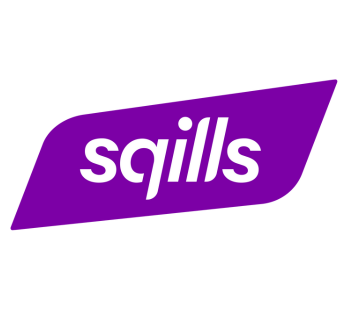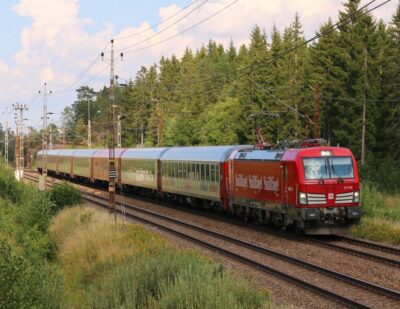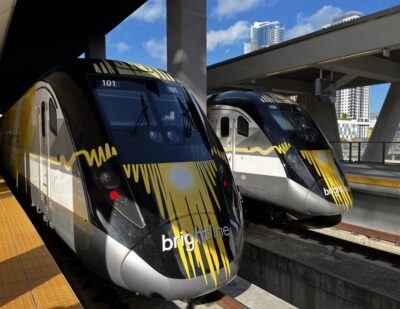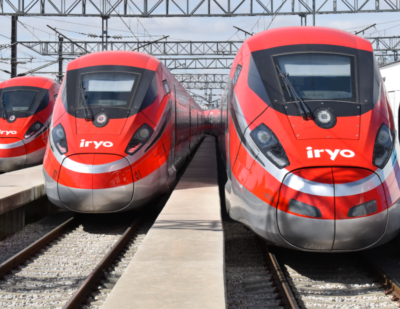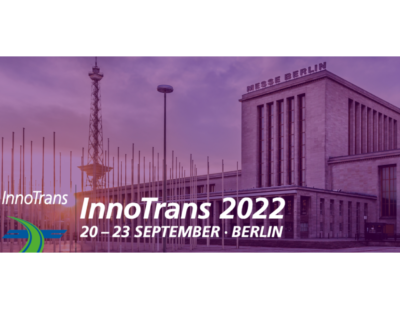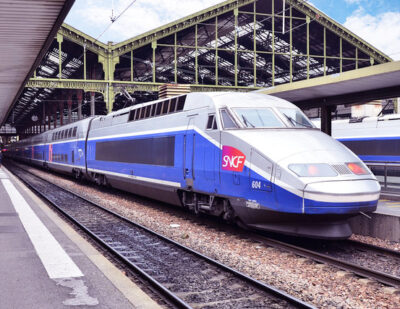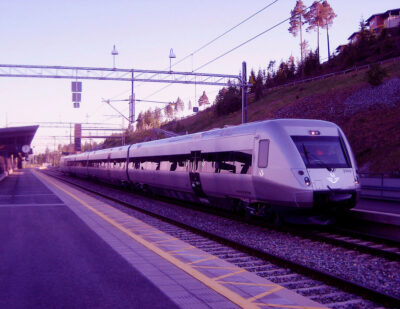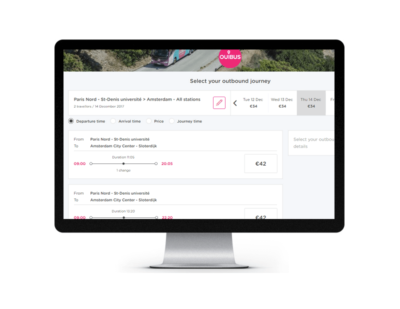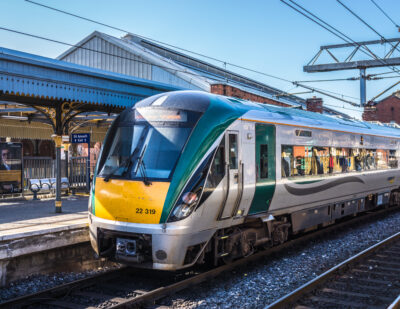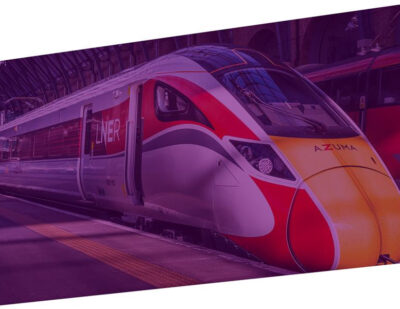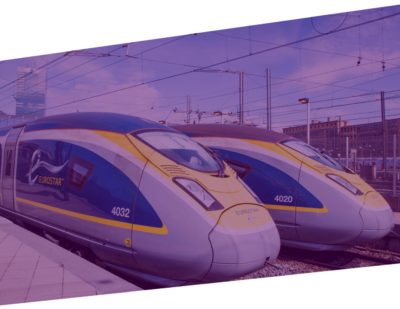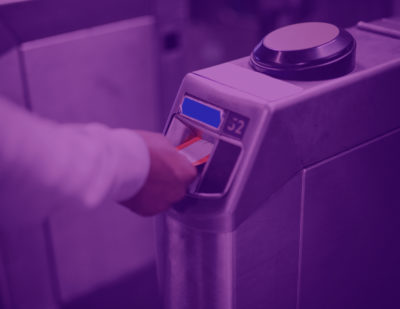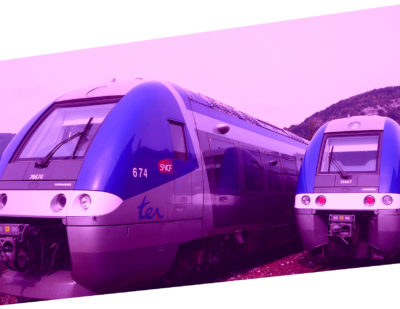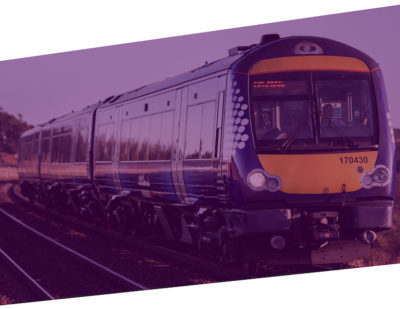Social Distancing in Public Transport
A report on the need for social distancing for open-access operators, and how a seat reservation system could offer a short-term solution.
The COVID-19 pandemic has introduced huge challenges to the public transport industry, with the almost immediate and almost complete shutdown of the (international) public transport systems as the most striking short-term effect. As countries are gradually seeing the effects of their various measures in an attempt to “Flatten the curve”, governments and public transport authorities and operators are starting to consider the post-corona society and the effects that will carry on in the long term of these unprecedented events.

Social distancing is a critical element of our lives, at least until a vaccine against COVID-19 is widely available and people feel safe using public transport. This poses tremendous challenges to those public transport operators that follow a so-called “open access” model. Without upfront knowledge of the capacity and occupancy of train or bus services, ensuring a safe distance between passengers is an almost impossible task. While airlines and high speed rail operators may see ways to adjust their seating and reservation logic to ensure more distance, the challenge to achieve the same effect is a multitude larger for operators without the luxury of knowing in advance who will be on board.
Switching to some form of a reserved seating model seems unavoidable to avoid the public transport system from being overrun during rush hour while safety regulations in the new reality only allow usage of a portion of the physical seat capacity. But how to approach this, as an operator that has limited or even no experience at all with seat reservation on-board their services?
Seat Reservation in Several Flavours
From an inventory management point of view, seat reservation as a concept does not necessarily imply that every individual passenger is assigned to a specific seat and is informed actively about the seat they can occupy during their journey.
Advanced inventory management systems approach this in several ways;
- The reserved seating model
- The no seat assigned reservation model
- The contingent based reservation model
In the traditional “reserved seating model”, an individual passenger is assigned to a specific seat, and is informed in their ticket or boarding pass about the seat they have been assigned to. They are expected to occupy that seat, and that seat only: in a public transport system that also supports open access, the seat is often even labelled to indicate where and when it is expected to be occupied by a reservation.
In the “no seat assigned reservation model”, the physical train or bus floor plan drives the calculation of seat availability dynamically (and this availability is decremented automatically for every now booking), but the customer is never actively informed about which precise carriage and seat they should use during their journey. For efficiency reasons, the allocations in the background do actually target individual seats and carriages: they are just never communicated to the passenger intentionally. The reason why allocation to specific seats still happens is efficiency: with a service serving multiple stops (allowing for multiple Origin & Destination pairs to be booked), this model can capture and optimise seat-reusage, sometimes referred to as cabotage, as much as possible. The fact that the seat number is not exposed to the customer often reflects the operational challenges in actually directing passengers to the right seat during their trip.
In the “contingent based reservation model”, the capacity reserved for booking is detached from the actual rolling stock used and is configured entirely manually per departure, date, and physical inventory class. The simplicity of the configuration of this model is the obvious benefit, while it is at the same time also its primary drawback: when the rolling stock planning changes and a train is cut in half for operational reasons, the operator must carefully consider the new reservable capacity. In the previous models, the fact that this recalculation is triggered automatically can be considered a significant benefit.
Operators typically also mix these models; for some business-oriented products, a specific guaranteed seat is assigned on intercity trains. For other more affordable leisure products, no specific place is communicated to the passenger (even if it may be assigned in the background). And some commuter services only manage reservable capacity by number, using the contingent approach, without dealing with the individual seats at all.
Whatever the model: each requires a sophisticate inventory management system that is (at the very least) capable of dealing with the challenges of:
- Calculating availability in real-time on Origin – Destination basis, as train routes and long-distance bus lines have the additional complexity (compared to airlines) of stopping at several locations during their service;
- Being able to provisionally lock capacity and release it again, should the customer abandon the booking process prematurely before finalising and confirming the transaction;
- Serving accurate information at scale, while still ensuring the central source of information is up to date (in an inventory management system, at any given point in time there is only one version of the truth in terms of current status of capacity and occupancy).
Operators that already have access to a modern inventory management system can consider themselves (relatively) lucky in the COVID-19 circumstances, as they can meet the social distancing challenges with updated configuration in their seating algorithm, blocked seats on their services, or reduced contingent sizes.
But for open access operators not in possession of such a system today, achieving the same effects threatens to be an operational nightmare involving large numbers of staff on-board and on platforms, and, even worse: a great number of disappointed passengers that are not allowed to board their originally planned departure due to (over)occupancy reasons that can only be observed by the time of departure.
Introducing Social Distancing Seat Reservation
The need for inventory management due to COVID-19 does not necessarily introduce a 180 degree change of course for open access operators. A seat reservation system can also be introduced besides the existing ticket sales, payment, and distribution systems. Of course, under more fortunate circumstances, an integrated ticket and seat reservation strategy simplifies the procedures, enhances customer experience, and leads to the highest gains at the lowest cost. But if the luxury of time is not on our side, and acting fast is required, solutions can still be achieved.
Even with a less integrated reservation system operators could make use of the solidarity of their passengers and the overall willingness to contribute to the health and safety of all, by registering the intention to travel on a specific service departure.
Even if that means the seat reservation is not directly related to the transportation ticket as “right to travel” : many operators in Europe traditionally, in fact, even come from the situation in which the ticket and the seat reservation were entirely separate entities. Some of the larger operators in Europe, in fact, still work like this.
In that approach, the information needed to configure a state of art reservation system is limited to:
- Timetable information for the future departures on the network
- Rolling stock information on the train and bus types that are delivering the service
- Business rules around seat allocation, in order to respect social distancing requirements
In that perspective, integration of ticket validity rules, payment collection for transactions, or even the fulfilment of secure digital barcode tickets, suddenly become less relevant than they would otherwise be in a more integrated approach. As it turns out, one does not need so much to get a reservation system up and running!
Relevant Considerations and Questions
Operators facing these challenging times, should ask themselves several strategic questions going forward. For example: when these challenging times of the COVID-19 pandemic lie behind us, would a reservation system still provide further added value in our business process? (Spoiler alert: yes, it does, in many ways!)
In the short term, in order to be able to at least use seat reservation as the solution to comply with social distancing requirements, the questions are more pragmatic and help to easily identify the scope of a potential system introduction:
- Is integration with the existing sales system and journey planner actually required at all?
- Is the raw data from the operational planning department regarding rolling stock readily available to assign passengers to specific seats?
- Is a “labelling” solution in place to ensure passengers can easily identify carriages and seats during their journey? Are the seats physically and visually numbered at all, on board?
- Is it safe (from the perspective of potential abuse of the system) to allow placing seat reservations free of charge, as the existing ticketing system is initially not integrated?
- Are passengers allowed to place seat reservations anonymously? And if not, what characteristics are best captured on each transaction to strike the right balance between a smooth operational process and safeguarding customer privacy?
The outcome to these questions may well vary over time: what is acceptable as a short term “emergency” solution, in these times of great citizen solidarity and willingness to cooperate with regulations and restrictions imposed for the public health and safety of all, may be less accepted by the customer base in the mid-term. For that reason, choosing a solution that provides maximum flexibility moving forward, is by definition recommended.
Sqills and the S3 Passenger Community
Sqills is a vendor of industry leading reservation and inventory management solutions focused entirely on the rail and bus industry and is currently actively working with a wide public transport operator community to face the challenges of this time. Key members of our community are SNCF with OUIGO and TER, Eurostar, Thalys with IZY, BlaBlaBus, Irish Rail, all UK train operators under the Rail Delivery Group, and more. For our existing customer base, our S3 Passenger product offers the toolset to manage this crisis by configuring relevant sales restrictions, reduced inventory capacity, and Sqills is actively working at this very moment on explicit “Social distancing” features that can be configured by the operators in their deployed S3 Passenger environment. These features will respect the required distance between separate bookings, while at the same time still allow a family to be seated together.
Based on today’s challenges introduced in this whitepaper for open access operators, Sqills extends an open invitation to all operators in the industry to join the S3 Passenger community and evaluate in a cooperative teaming mode with our internal subject matter experts as well as our industry partners and members, whether a ultra-fast deployment of an S3 Passenger instance for seat reservation can be a solution to help colleagues in the industry re-start their operations in the aftermath of the COVID-19 pandemic.
Quick time to market is a key benefit of the S3 Passenger platform, both in terms of “rollout” of the system itself, as well as seeing configuration changes through towards all distribution channels. Under more fortunate circumstances, this benefit was often highlighted as a “Unique selling point” and makes the commercial business case of using S3 Passenger more attractive. It is our honest conviction that in these extraordinary circumstances in the industry, the quick time to market could be of critical importance to operators that need to find their way forward one way or another in the uncertain future of public transport. Please contact Sqills if you feel we can support you with that challenge.

